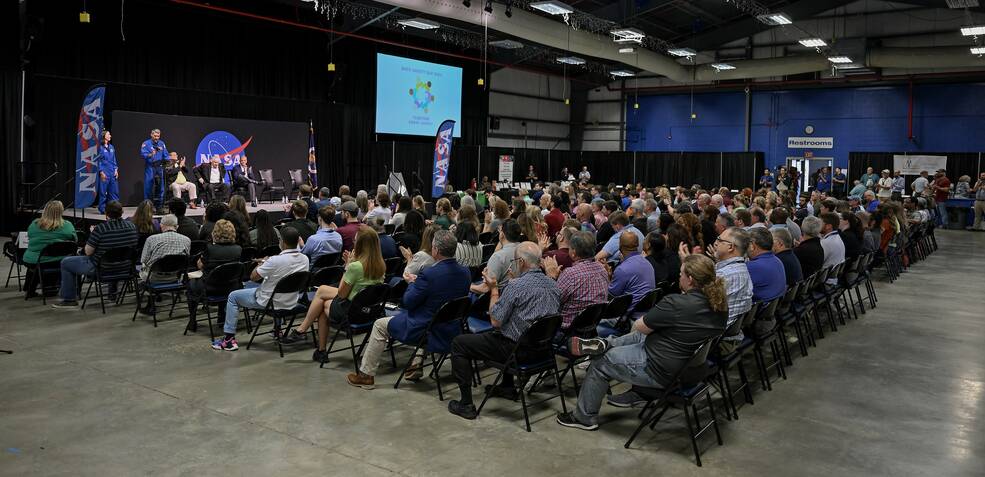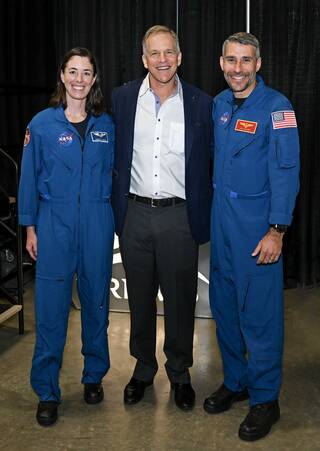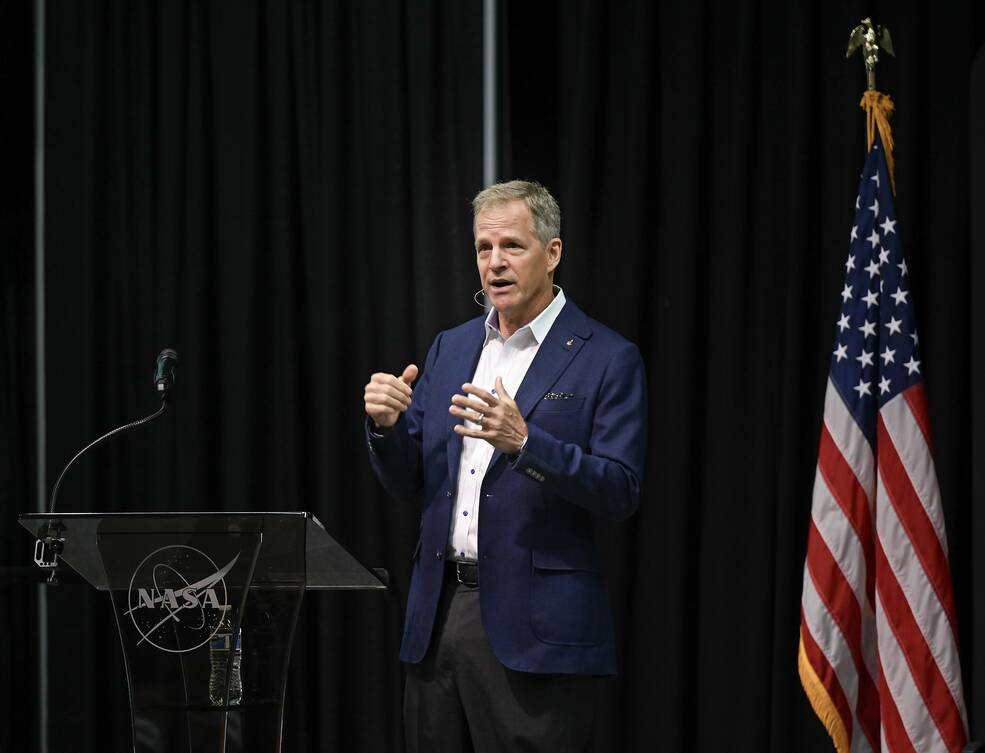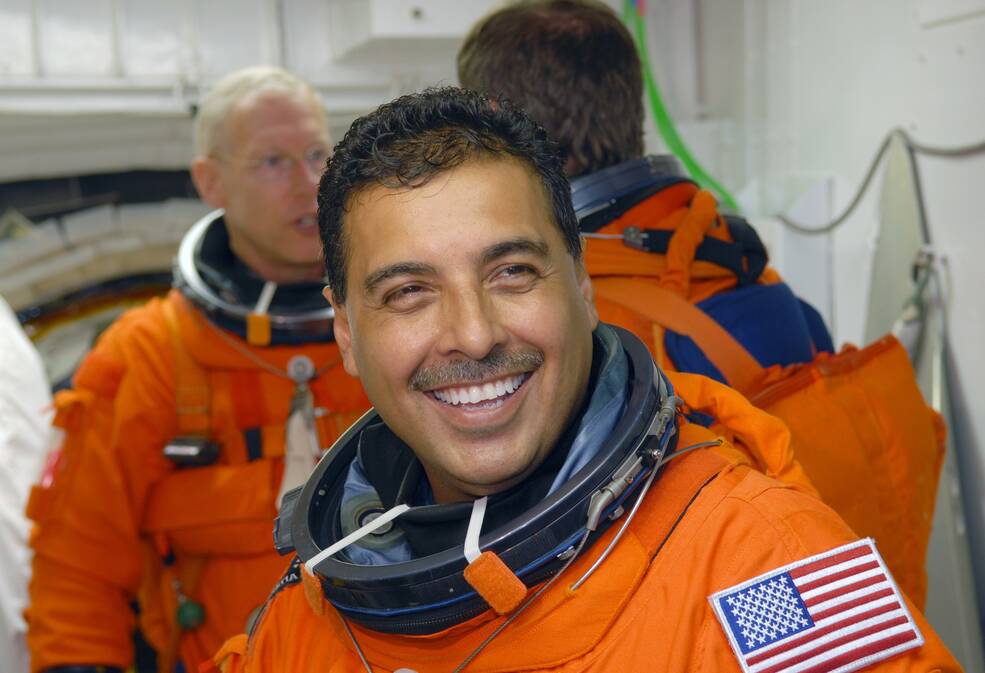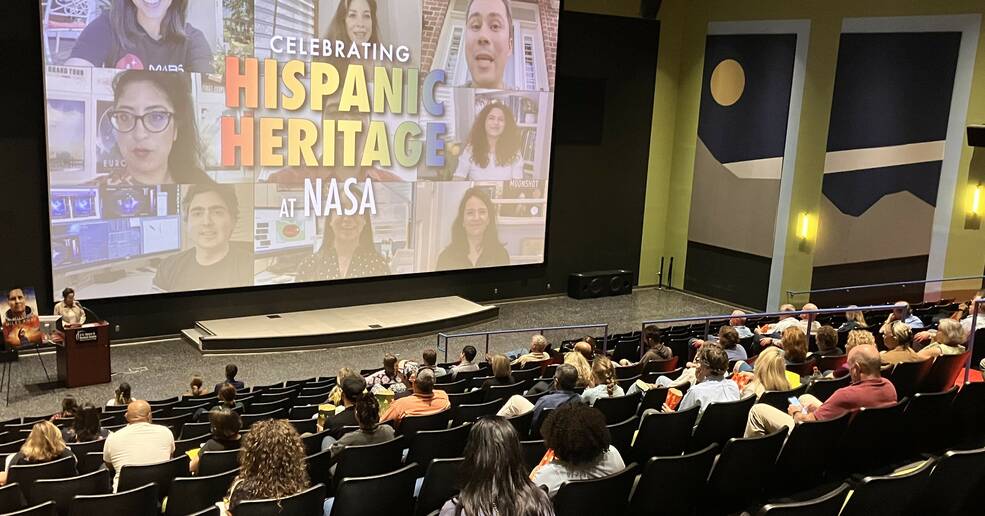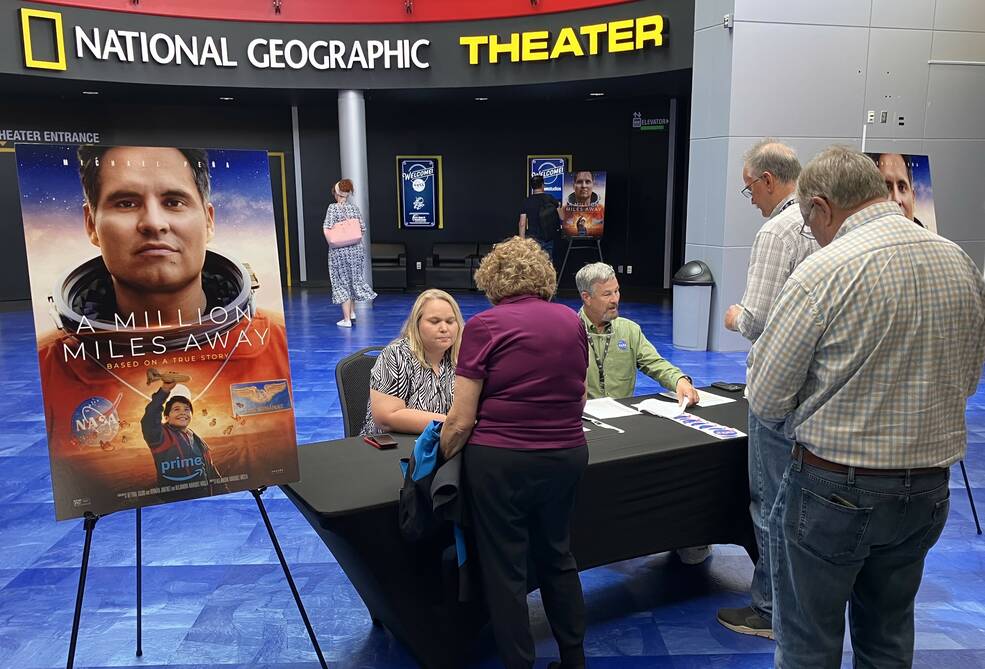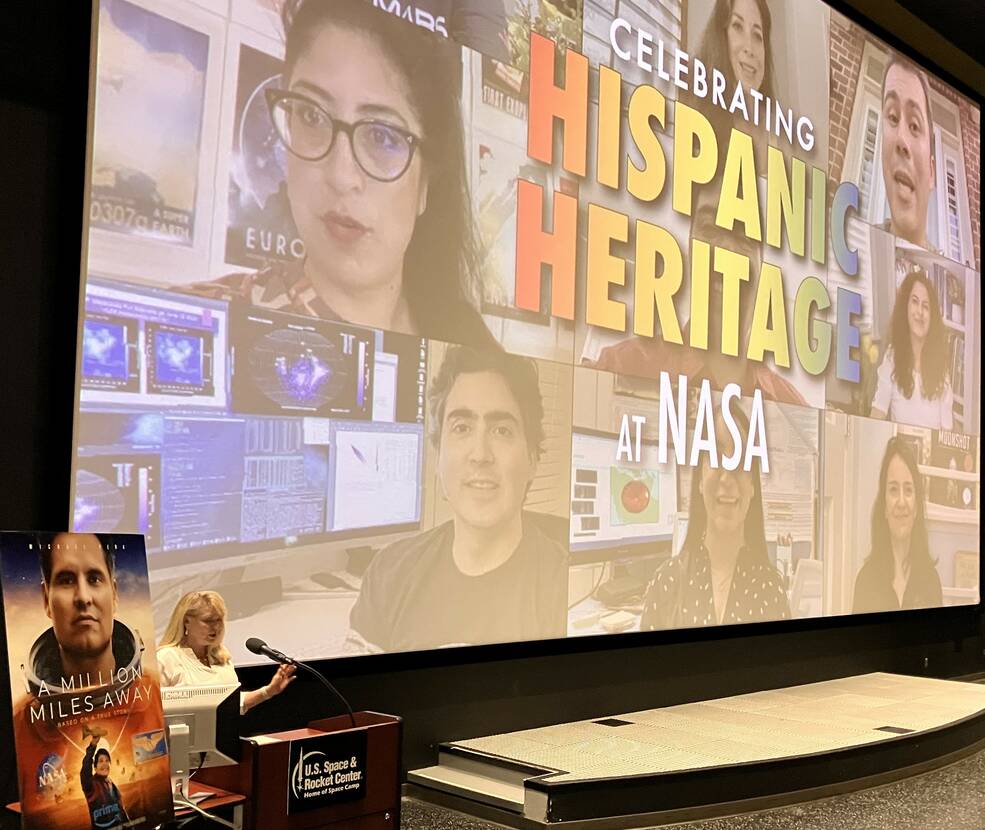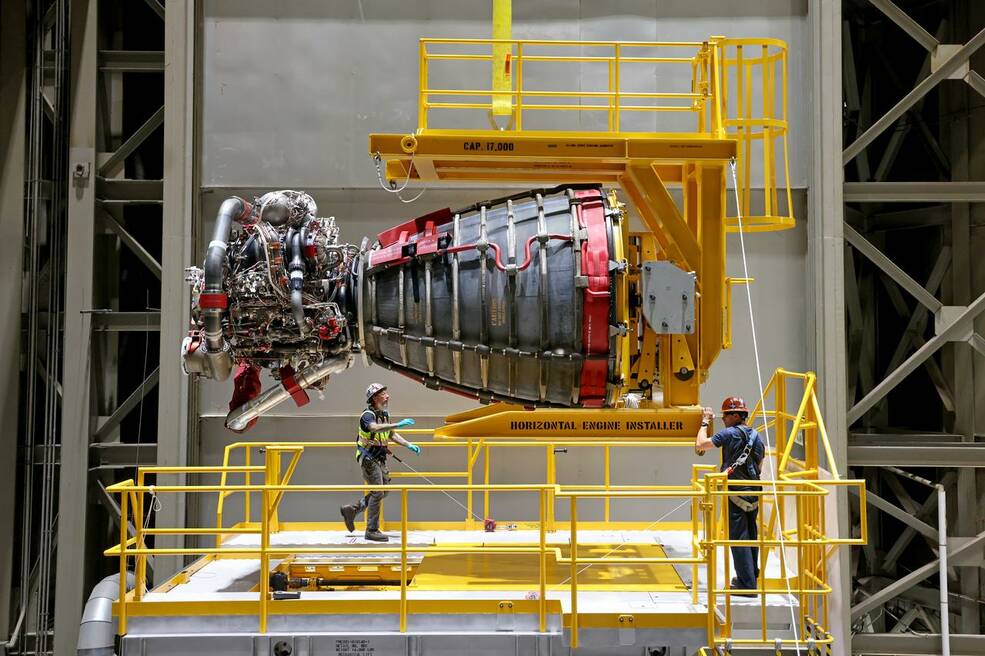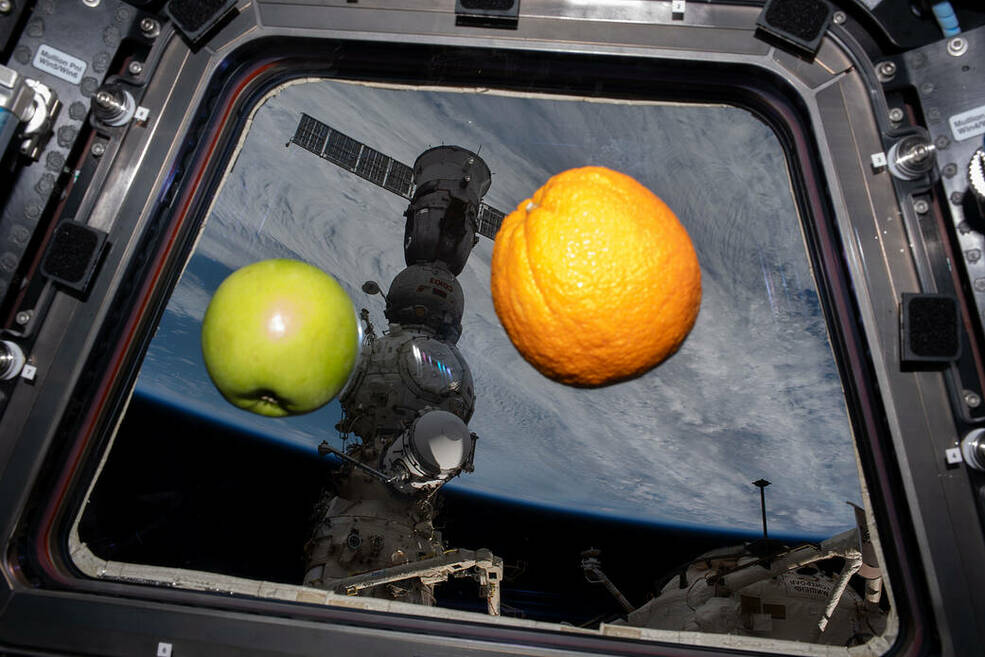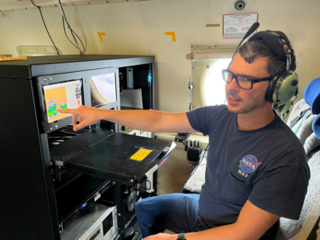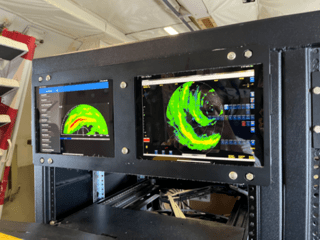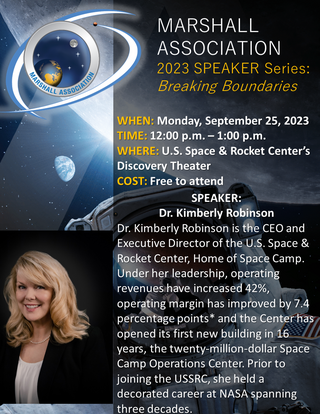The Marshall Star for September 20, 2023.
In This Week’s Star
Marshall Team Members Enjoy First In-Person Safety Day Since Pandemic
By Celine Smith
Staying safe has a new meaning after three years of limited social interaction.
NASA’s Marshall Space Flight Center held its annual Safety Day on Sept. 14 in Activities Building 4316 and other sites around the center. The theme was “Together Again-Safely,” alluding to the event being the first one in person since the COVID-19 pandemic.
NASA started Safety Day following the 2003 space shuttle Columbia accident. Centers across the agency dedicate a day each year for team members to take pause and reflect on keeping the work environment safe. The pandemic has limited in-person events since 2020.
“COVID added another layer of safety because we now have to take into consideration a new protocol,” said Joseph Gaines, the chairperson for the Safety Day committee and technical assistant in Marshall’s Safety & Mission Assurance Directorate.
Larry Leopard, associate center director, technical, encouraged workers to be safe by taking care of their health during his Safety Day kickoff speech. He encouraged civil servants and contractors to take advantage of Marshall’s counseling services, the gym facilities, and to take time off throughout the year to prevent burnout.
This year’s event had an assortment of attractions. Speakers included two astronaut candidates – Luke Delaney and Christina Birch – and retired NASA astronaut Dr. Scott Parazynski.
Parazynski is also a physician, best-selling author, mountaineer, and CEO of Onward Air. He spoke about safety and how it related to the seven missions he was a part of along with his two expeditions to the top of Mount Everest. The topic was especially important to Parazynski because of his role as the escort for the Columbia crew prior to their launch.
Delaney, a retired Marine test pilot, and Birch, a track cycling team member during the Tokyo 2020 Olympics, answered questions from the audience about the importance of safety during training for space travel.
“We’re pushing the boundaries of space exploration so it’s important that safety culture is embedded in the missions,” Delaney said.
Exhibitors also provided information about a variety of safety topics, including the Automated External Defibrillator, fire prevention, fall protection, distracted driving, Mission Success is in Our Hands, Army Community Service, Space Flight Success, Marshall Emergency Management, and the NASA Safety Center. Flu shots were also available to team members.
The event included a live performance from the band Falcon Punch. Team members also joined a Yoga class, led by Leah Fox, and a Zumba class, led by Beverly Johnson.
More than 350 civil servants and contractors participated in person, with 250 more joining online to learn about health and safety.
“It’s great to make it to the summit but it’s more important to make the round trip,” Parazynski said.
Smith, a Media Fusion employee, supports the Marshall Office of Communications.
NASA’s Leadership Development Programs Focus on Advancing Team Members
By Wayne Smith
As NASA explores the universe for the benefit of humanity, the agency has three resources aimed at guiding team members who want to explore moving into leadership positions and lead the agency into the future.
Leadership development is a top priority for NASA’s Office of the Chief Human Capital Officer, which offers programs and courses designed to develop the agency’s future leaders. Leadership development covers topics from leading an organization to self-improvement. Development activities can be formal or informal and are meant to enhance skills, abilities, and qualities of employees and leaders at any level.
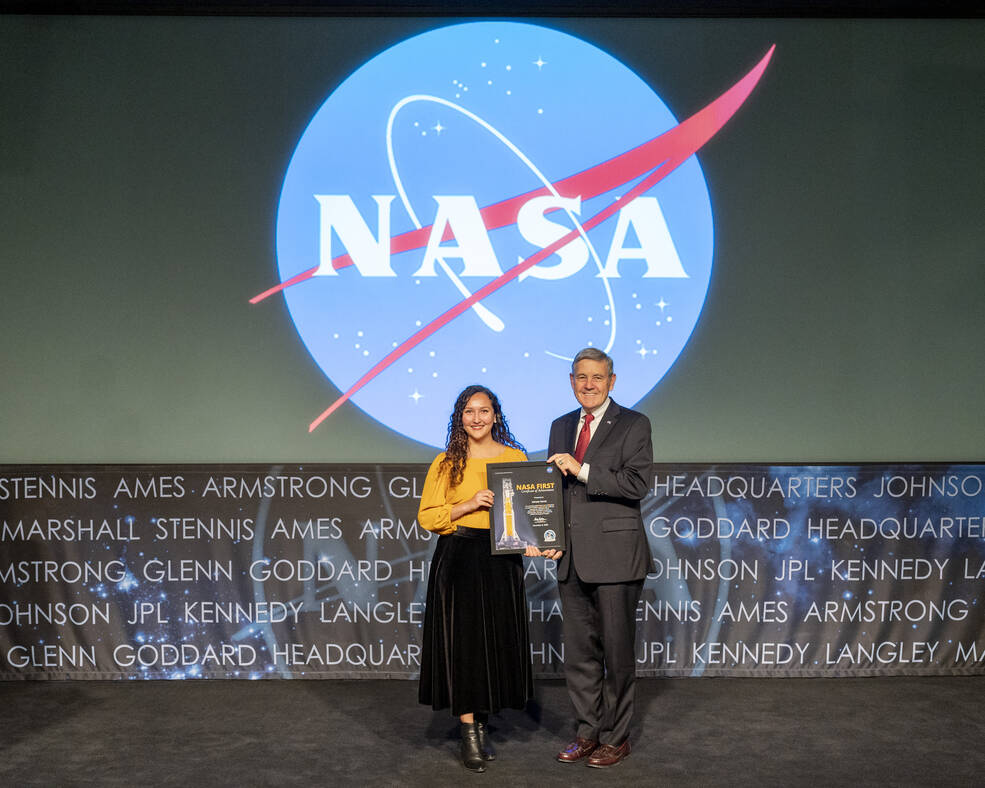
“It is important for each leader – from subject matter expert to center director – to help grow a group of individuals able and willing to step into their shoes when they move on to something else,” said Rae Ann Meyer, associate director at NASA’s Marshall Space Flight Center. “This is the only way we will be ready to execute NASA missions of the future. With that, each and every one of us holds the responsibility for our own development. You should be able to reach out to supervisors, mentors, and training professionals for guidance when needed. The development of our workforce is truly a shared opportunity and duty.”
Marshall team members can find out more about courses that support this type of leadership development on Inside Marshall.
NASA FIRST Reimagined
One of the opportunities offered is NASA FIRST (Foundations of Influence, Relationships, Success, and Teamwork) Reimagined, which focuses on developing leadership capabilities and intra-agency collaboration by exploring three components: NASA as an agency, awareness of self, and team dynamics. Participants of NASA FIRST Reimagined will join a cohort that experiences valuable opportunities such as coaching, shadowing opportunities outside of participants work area, center tours, wellness, and resiliency, and more. The program is designed to provide early career employees with the foundational skills for future success within the agency.
The nine-month, part-time program is held every other year and is conducted in a mix of virtual and in-person sessions. Each NASA FIRST cohort is assigned an area of agency priority. The cohort is then divided into sub-groups. These sub-groups design and develop projects aligned with the assigned agency priority.
NASA FIRST 2022 projects included Technology and Hoteling; Diversity, Equity, Inclusion, and Accessibility (DEIA); Multigenerational Workforce Development; Training; Metrics and Data Assessment; Culture; and the Future of NASA.
For example, through a series of brainstorming exercises, the Future of NASA team asked participants to identify and discuss trends and disruptors that will impact the agency, a vision for the ideal future NASA and ideal future of work, and how NASA can best position itself moving forward.
Marissa Garcia, a combustion devices engineer at Marshall and a graduate from the 2022 cohort, described the program as challenging, life-changing, and transformative.
“I thought that the (NASA) FIRST program was going to be non-stop, formal trainings,” Garcia said. “I knew there were going to be opportunities to network and collaborate with the other ‘FIRSTers’ across the agency and have access to senior leaders. What I didn’t know was how emotional and eye-opening FIRST is. FIRST gave me a deep dive into who I am as a person and as a leader by increasing my self-awareness and allowed me to get invaluable feedback from my peers and management. Having this information about myself this early in my career has been invaluable and has increased my self-confidence. I would 110% do NASA FIRST again and would recommend the program to all early career employees.”
There is a current call, open thru Sept. 29, for applications to the fiscal year 2024 NASA FIRST program. Interested Marshall team members at the GS11, 12, and 13 grade level can find information on the application process on Inside Marshall.
NASA also offers other development programs for team members, including NASA Next and NASA ASPIRE.
NASA Next
NASA Nextis a leadership development program that helps GS-13 and GS-14 civil servants take their NASA careers to the next level. The 60-person agency wide cohort program is open to GS-13 and GS-14 civil servants and is a redesign of the agency’s former Mid-Level Leader Program. The program, which launched in 2023, focuses on developing civil servants in mid-level positions who have a high potential for assuming greater leadership responsibilities in management or program/project-management roles.
The 10-month program uses a hybrid learning approach combining in-person and virtual sessions.
NASA ASPIRE
NASA considers GS-15s with an interest in becoming a member of the SES (Senior Executive Service) or SL/ST (senior level/scientific professional) to be aspiring executives (ASPIRE). It’s crucial to the agency to develop and support its aspiring executives in their individual leadership journeys.
ASPIRE also uses cohort-based learning, a collaborative learning style in which a group of individuals advance through an immersive educational program together. Marshall has four members of the first ASPIRE cohort who just completed their first module of the program.
“Although ASPIRE, Next, and FIRST are one of many training avenues, the beauty of cohort learning opportunities is that they offer a combination of formal training, peer mentorship and shared experience, as well as network development,” Meyer said.
Smith, a Media Fusion employee and the Marshall Star editor, supports the Marshall Office of Communications.
NASA Contributes to Film Detailing Life of Astronaut José Hernández
In collaboration with Amazon Studios, NASA is helping chronicle the life and career of retired NASA astronaut José Hernández through an upcoming film. “A Million Miles Away,” starring Michael Peña, tells the story of Hernández’ journey from migrant farmer to NASA space explorer.
For the film, NASA provided technical expertise, footage and imagery, and secured clearances for set designs, props, and costumes.
“José, a Latino astronaut, is one of many diverse professionals who have contributed to our work to explore the secrets of the universe for the benefit of all,” said Elaine Ho, chief diversity officer at NASA Headquarters in Washington. “His story – one that underscores of the power of perseverance to achieve your dreams – is an inspiration to individuals of all backgrounds.”
Seeking talent from every corner of America, and every walk of life, NASA has assembled a team of world-class experts who share a passion for exploration. Since 1980, the agency has selected more than a dozen Latino astronauts.
“Hispanic Heritage Month also begins in the coming weeks and films like this provide meaningful platforms to help tell stories like Hernández’s, while also fostering awareness of NASA’s history and inspiring a new generation – the Artemis Generation,” said Brian Odom, chief historian at NASA Headquarters.
NASA’s Marshall Space Flight Center and the Marshall Exchange collaborated with Amazon Studios and agency headquarters to provide a special screening opportunity to Marshall employees Sept. 13 at the U.S. Space & Rocket Center’s National Geographic Theater in Huntsville. The event kicked off Marshall’s celebration of Hispanic Heritage Month – which is observed annually from Sept. 15 – Oct. 15 – with several speakers, including Alix Villanueva, representing Marshall’s Hispanic employee resource group, HUMANO (Hispanics United at Marshall Advocating, Networking and Overcoming); Janet Washington, program manager of Disability and Reasonable Accommodations with Marshall’s Office of Diversity and Equal Opportunity, and Kimberly Robinson, CEO of the Space and Rocket Center.
NASA is committed to a culture of diversity and inclusion across its whole workforce, which increasingly reflects the American public. As the agency continues its journey of lunar exploration missions through the Artemis program, NASA is committed to sending the first woman and first person of color to the lunar surface. At the Moon, NASA will prepare for its next giant leap – human exploration of Mars.
Jessica Barnett contributed to this report. Barnett, a Media Fusion employee, supports the Marshall Office of Communications.
First RS-25 Engine Installed to NASA’s Artemis II Moon Rocket
Technicians at NASA’s Michoud Assembly Facility have begun installing the four RS-25 engines onto the core stage of the agency’s SLS (Space Launch System) rocket that will help power NASA’s first crewed Artemis mission to the Moon. During Artemis II, NASA astronauts Reid Wiseman, Victor Glover, Christina Koch, and CSA (Canadian Space Agency) astronaut Jeremy Hansen will launch on SLS and journey around the Moon inside the Orion spacecraft during an approximately 10-day mission in preparation for future lunar missions.
The first engine was installed Sept. 11. It follows the joining of all five major structures that make up the SLS core stage earlier this spring. NASA, lead RS-25 engines contractor Aerojet Rocketdyne, an L3 Harris Technologies company, and Boeing, the core stage lead contractor, will continue integrating the remaining engines into the stage and installing the propulsion and electrical systems within the structure.
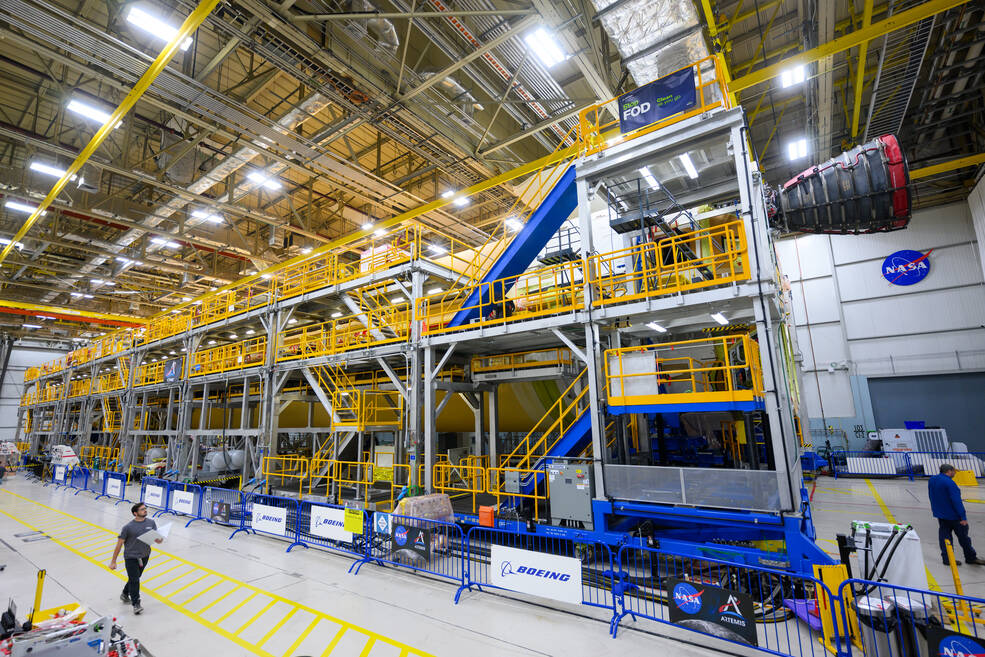
All four RS-25 engines are located at the base of the core stage within the engine section, which protects the engines from the extreme temperatures during launch and has an aerodynamic boat tail fairing to channel airflow. During launch and flight, the four engines will fire nonstop for over eight minutes, consuming propellant from the core stage’s two massive propellant tanks at a rate of 1,500 gallons per second.
Each SLS engine has a different serial number. The serial number for the engine installed Sept. 11 in position two on the core stage is E2059. It along with the engine in position one, E2047, previously flew on space shuttle flights. E2047 is the most veteran engine of the entire set flying on Artemis II with 15 shuttle flights, including STS-98, which delivered the Destiny Laboratory Module to the International Space Station in 2001. The engines installed in positions three and four (E2062 and E2063) are new engines that include previously flown hardware.
NASA is working to land the first woman and first person of color on the Moon under Artemis. SLS is part of NASA’s backbone for deep space exploration, along with Orion and the Gateway in orbit around the Moon, and commercial human landing systems. SLS is the only rocket that can send Orion, astronauts, and supplies to the Moon in a single mission. NASA’s Marshall Space Flight Center manages the SLS Program.
Third Subscale Booster for Future Artemis Missions Fires Up at Marshall
Engineers at NASA’s Marshall Space Flight Center conducted a hot fire of a 24-inch subscale solid rocket motor Sept. 14. The test, conducted in Marshall’s East Test Area, produced more than 82,000 pounds of thrust and was part of an ongoing series of developmental tests for an upgraded booster design for future configurations of NASA’s SLS (Space Launch System) rocket.
Beginning with Artemis IX, the SLS rocket in its Block 2 configuration will use the BOLE (booster obsolescence and life extension) booster. The more powerful solid rocket motor will give the SLS rocket the capability to send even heavier payloads to the Moon and other areas of deep space for future Artemis missions.
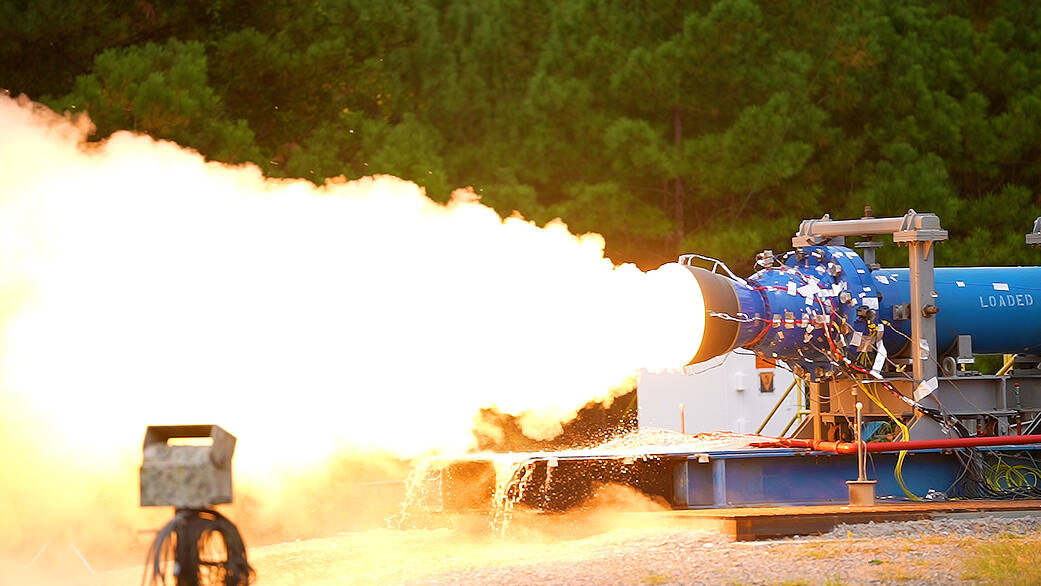
The test was the third in the series to evaluate the alternate materials for possible use in the nozzle and motor insulation and built upon prior tests at Marshall in 2022 and 2021. The subscale motor tests are an essential part of learning how a full-scale BOLE booster will perform during flight.
For this latest test, NASA and lead booster contractor Northrop Grumman used different materials for both the nozzle and the insulation with the intent of improving the erosion resistance of the components. Engineers will use the data from the test to analyze how the nozzle and insulation performed and compare it to results from the second test.
Engineers at NASA’s Marshall Space Flight Center in Huntsville, Alabama, completed a subscale booster motor test Sept. 14 in Marshall’s East Test Area. The 24-inch booster produced more than 82,000 pounds of thrust. It is the third test in an ongoing series supporting development of an upgraded booster design with alternative nozzle and insulation materials for SLS (Space Launch System) flights after Artemis VIII. Marshall manages the SLS Program. For more information about SLS, visit https://www.nasa.gov/sls.Credits: NASA/Sam Lott
The SLS solid rocket boosters are the largest, most powerful boosters ever built for spaceflight. They produce more than 75% of total thrust for the first two minutes of flight. Marshall manages the SLS Program.
NASA is working to land the first woman and first person of color on the Moon under Artemis. SLS is part of NASA’s backbone for deep space exploration, along with Orion and the Gateway in orbit around the Moon, and commercial human landing systems. SLS is the only rocket that can send Orion, astronauts, and supplies to the Moon in a single mission.
NASA Begins Final Phase of $3 Million Deep Space Food Challenge
NASA is kicking off the final phase of a challenge to help feed the astronauts of the future.
The agency’s Deep Space Food Challenge seeks to create novel food production systems that offer safe, nutritious, and delicious food for long-duration human exploration missions, while being conscious of waste, resources, and labor. And closer to home, the challenge could benefit humanity by helping to address food scarcity problems on Earth. In the third and final phase of the challenge, NASA is offering a $1.5 million prize purse to winning U.S. teams.
“The International Space Station is restocked every 60 to 90 days, and we are able to manage the waste generated from those payload deliveries,” said Denise Morris, program manager for Centennial Challenges, which is managed out of NASA’s Marshall Space Flight Center. “In order to get to Mars and beyond, we must adapt how we feed our crews with no resupply, little added waste and resources, and an ideal level of labor. The solutions derived from the Deep Space Food Challenge will bridge this massive technology gap, allowing us to venture further and longer than we ever have before.”
Five U.S. and three international finalists, which were announced in May, are invited to test their food production systems as part of a simulated mission carried out by a crew of analog astronauts at the George Washington Carver Science Park’s Terrestrial Analog Facility. A joint venture between Voyager Space, Airbus, and Starlab LLC, the Terrestrial Analog Facility is built to simulate what a research facility would look and operate like in a deep space environment. This facility operates within the Agricultural Engineering Building on The Ohio State University campus in Columbus, Ohio. The university is partnering with the Methuselah Foundation – which manages the challenge for NASA – to provide academic expertise and resources for the final phase.
A group of Ohio State undergraduate student “Simunauts” will act as a crew of analog astronauts to maintain and operate the food production technologies inside the Terrestrial Analog Facility during an eight-week testing and demonstration period that will begin by summer 2024. Their reports will inform the judges’ evaluation of the criteria, which includes:
- Acceptability and safety of the production process and resulting food,
- Inputs/outputs in relation to quantity of food produced, nutritional quality, and water use,
- Reliability of the food production technology, and
- Stability of the input products and food outputs.
“Incorporating the Simunauts will demonstrate how much the teams’ technologies have been developed to consider the experience and impact to a potential future crew,” said Angela Herblet, challenge manager for the Deep Space Food Challenge at Marshall. “One goal of the challenge is to yield food systems that aren’t too difficult for the crew, as our astronauts have plenty to do when they’re on deep space missions. We want to make eating safe, healthy, tasty food as easy and enjoyable as possible.”
The Simunaut crew will be selected and announced before the demonstrations are set to begin.
NASA opened the first phase of the competition in 2021 as a first-of-its-kind coordinated effort with the Canadian Space Agency, which is running its own challenge in parallel. The derived solutions will ideally serve as blueprints for how to feed a crew of four astronauts for a three-year round-trip mission with no resupply.
After 18 U.S. teams were awarded $25,000 each and 10 international teams were recognized as winners of the initial design phase, Phase 2 kicked off in January 2022, where returning and new teams developed their ideas into usable prototypes that were demonstrated for judges at their own labs and facilities. The teams produced samples of their food and provided a vision for Earth applications of their technologies, which were showcased at Smart Design in the Brooklyn Navy Yard during New York’s NYCxDESIGN event in May 2023 as part of the Phase 2 winners’ announcement.
The Phase 3 finalists that that can advance their prototypes and achieve approval from the judging panel to deliver to the Terrestrial Analog Facility will each receive $50,000. At the end of the demonstration period, up to one top scoring U.S. team will win $750,000, and up to two runners up will each receive $250,000.
The Deep Space Food Challenge, a NASA Centennial Challenge, is a coordinated effort between NASA and the Canadian Space Agency. Subject matter experts at Johnson Space Center and Kennedy Space Center support the competition. Centennial Challenges are part of the Prizes, Challenges, and Crowdsourcing program within NASA’s Space Technology Mission Directorate and are managed at Marshall. The Methuselah Foundation, in partnership with NASA, oversees the United States and international competitors.
NASA Scientist Flies Through the Eyewall of Hurricane Lee
By Liz Junod
Dr. Patrick Duran had an experience of a lifetime flying through Hurricane Lee’s inner eyewall as the Atlantic storm moved toward New England, witnessing historic data that will be published for years to come.
Duran is the lead tropical research scientist of NASA’s SPoRT (Short-Term Prediction and Transition) Center, a part of NASA’s Marshall’s Space Flight Center.
Determined to fly into a hurricane since the age of 12, Duran was granted three coveted spots to fly aboard NOAA’s P-3 aircraft through the eyewall of Hurricane Lee from Sept. 9-11. Duran’s tropical cyclone research with NASA SPoRT focuses on studying the intensity of energetic lightning flashes within the inner eyewall of a hurricane and how it relates to changes in the cloud and updraft structure in the storm as it strengthens. Duran took advantage of this one-of-a-kind experience to witness his research come to life.
“One of the many fascinating things about hurricanes is that they all behave differently and can evolve so rapidly,” Duran said. “What I witnessed flying through Hurricane Lee was a great example of a storm that changed quickly and behaved in unexpected ways.”
Before Duran’s first flight aboard NOAA’s P-3 aircraft Sept. 9, Lee was declared a major category 3 hurricane. Using instrumentation aboard the P-3 aircraft, the flight director made some quick measurements using the radar and determined Hurricane Lee had a very small, elliptical eye not producing lightning at the time.
“All the right ingredients must be in place for a hurricane to produce lightning,” Duran said. “The structure of a hurricane’s updrafts and the distribution of cloud particles, particularly particles of frozen precipitation that are often electrically charged, must be just right to allow enough electric charge to build up for lightning to occur.”
While Duran didn’t observe lightning produced by Lee on the first flight, he did witness another unique element to that impacts hurricanes: mesovortices. Mesovortices, or small regions of spinning air within the eyewall, are an important structure of a hurricane’s inner core and can cause localized areas of very high winds at the surface while also affecting the storm’s overall structure.
“My collaborators and I believe mesovortices may alter the structure of lightning flashes in the inner core of the storm,” Duran said. “The data collected on our flights into Lee could help us understand this better.”
As hurricanes rapidly change, the National Hurricane Center decreased Lee’s intensity to category 2 by early Sept. 10. This change led to Duran finally witnessing lightning within the inner eyewall of Hurricane Lee as the P-3 aircraft exited Lee’s eyewall.
“It was an unforgettable experience, witnessing something in real-time you’ve been researching for years,” he said. “I look forward to diving more deeply into the data we collected on Lee’s electrically active eyewall.”
Duran’s third and final flight aboard the P-3 aircraft on Sept. 11 captured historical datasets on Hurricane Lee. The P-3 aircraft flew within the storm while it was forming a secondary eyewall, which is a ring of strong storms that encircle the storm’s preexisting eyewall.
“Secondary eyewall formation is one of the most important processes that affects the intensity of strong hurricanes, however it’s also one of the most difficult processes to predict,” Duran said.
With this rare phenomenon unfolding, and little data collected on secondary eyewalls, the flight meteorologist wasted no time flying into the region between the two eyewalls. The plane orbited around the eye, while the Doppler radar located in the tail of the plane took data on both the primary and secondary eyewalls.
Now back at Marshall, Duran’s goal is to have the SPoRT Center partner with scientists at NOAA’s Hurricane Research Division to study the data and gain a better understanding of secondary eyewall structure, especially as it relates to electrification or non-electrification of hurricanes.
“These three flights were a lifechanging experience, and we collected data that will be studied for years to come,” Duran said. “With its unexpected intensity fluctuations, secondary eyewall formation, and electrification, these new datasets will further our understanding of intensification and weakening in strong hurricanes.”
Junod is a communication specialist supporting NASA SPoRT.
OSIRIS-REx Featured on ‘This Week at NASA’ Ahead of Sept. 24 Landing
NASA’s OSIRIS-REx spacecraft recently made a course adjustment to better position itself to release a capsule carrying sample material from asteroid Bennu toward the designated landing zone in the Utah desert. The mission is featured in “This Week @ NASA,” a weekly video program broadcast on NASA-TV and posted online.
The capsule is scheduled to make a parachute-assisted landing on Sept. 24. OSIRIS-REx is the first U.S. mission to collect a sample from an asteroid. NASA’s live coverage of the capsule landing starts at 9 a.m. CDT and will air on NASA TV, the NASA app, and the agency’s website.
On Sept. 17, OSIRIS-REx engineers slightly shifted the spacecraft’s trajectory to refine the landing location of its sample capsule. The spacecraft briefly fired its thrusters to change its velocity by 7 inches per minute relative to Earth. This final correction maneuver moved the sample capsule’s predicted landing location east by nearly 8 miles to the center of its predetermined landing zone inside a 36-mile by 8.5-mile area on the Defense Department’s Utah Test and Training Range.
OSIRIS-REx is the third mission in NASA’s New Frontiers Program, which is managed at the agency’s Marshall Space Flight Center and aims to explore our solar system through medium-class robotic spacecraft missions. NASA’s Goddard Space Flight Center provides overall mission management, systems engineering, and the safety and mission assurance for OSIRIS-REx. Dante Lauretta of the University of Arizona, Tucson, is the principal investigator. The university leads the science team and the mission’s science observation planning and data processing. Lockheed Martin Space in Littleton, Colorado, built the spacecraft and provides flight operations. Goddard and KinetX Aerospace are responsible for navigating the OSIRIS-REx spacecraft.
View this and previous episodes at “This Week @NASA” on NASA’s YouTube page.
Kimberly Robinson Guest for Sept. 25 Marshall Association Speaker Series
Kimberly Robinson, CEO and executive director of the U.S. Space & Rocket Center, will be the guest speaker for the Marshall Association Speaker Series on Sept. 25.
The event will be 12-1 p.m. at the Space & Rocket Center’s Discovery Theater in Huntsville. It is free and open to everyone. The meeting topic follows this year’s theme of Breaking Boundaries.
Robinson will be providing updates on the museum’s latest developments. Under her leadership, operating revenues have increased 42%, operating margin has improved 7.4 percentage points, and the center has opened its first new building in 16 years, the $20 million Space Camp Operations Center. Prior to joining the rocket center, Robinson had a decorated career at NASA spanning three decades.
Contact the Marshall Association for more information about the event.
A Fab Five: New Images with NASA’s Chandra X-ray Observatory
A new collection of stunning images highlights data from NASA’s Chandra X-ray Observatory and other telescopes. These objects have been observed in light invisible to human eyes – including X-rays, infrared, and radio – by some of the world’s most powerful telescopes. The data from different types of light has been assigned colors that the human eye can perceive, allowing us to explore these cosmic entities.
The objects in this quintet of images range both in distance and category. Vela and Kepler are the remains of exploded stars within the Milky Way galaxy, the center of which can be seen in the top panorama. In NGC 1365, a double-barred spiral galaxy located about 60 million light-years from Earth is reflected. Farther away and on an even larger scale, ESO 137-001 shows what happens when a galaxy hurtles through space and leaves a wake behind it.
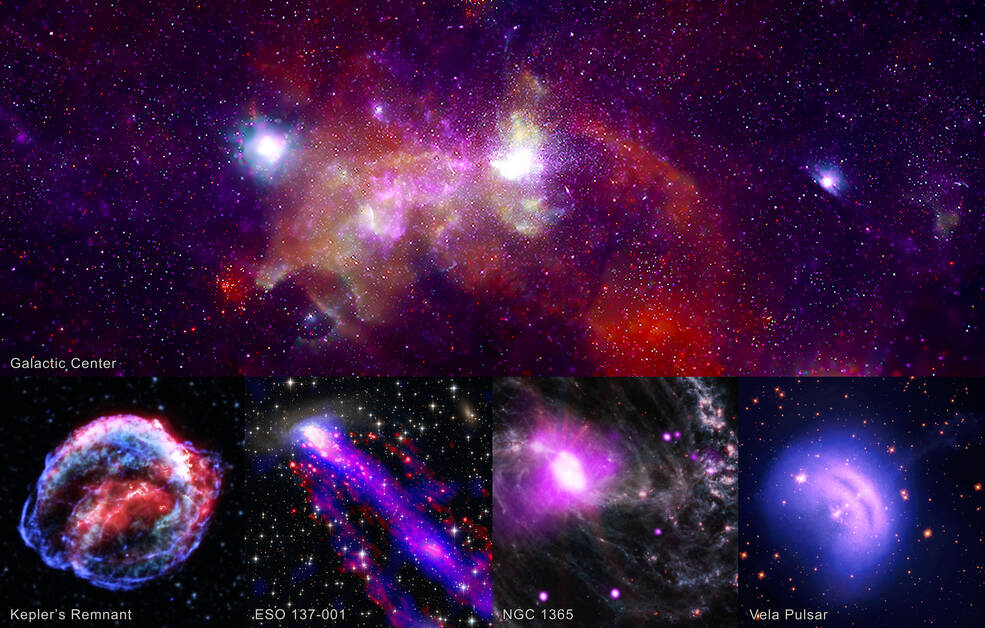
Galactic Center The Galactic Center is about 26,000 light-years from Earth, but telescopes like NASA’s Chandra X-ray Observatory (orange, green, blue, purple) allow a virtual visit. The center of the Milky Way contains a supermassive black hole, superheated clouds of gas, massive stars, neutron stars, and much more.
Kepler’s Supernova Remnant The Kepler supernova remnant is the remains of a white dwarf that exploded after undergoing a thermonuclear explosion. Chandra (blue) shows a powerful blast wave that ripped through space after the detonation, while infrared data from NASA’s retired Spitzer Space Telescope (red) and optical light from Hubble (cyan and yellow) show the debris of the destroyed star.
ESO 137-001 As the galaxy moves through space at 1.5 million miles per hour, it leaves not one – but two – tails behind it. These tails trailing after ESO 137-001 are made of superheated gas that Chandra detects in X-rays (blue). ESO’s Very Large Telescope shows light from hydrogen atoms (red), which have been added to the image along with optical and infrared data from Hubble (orange and cyan).
NGC 1365 The center of the spiral galaxy NGC 1365 contains a supermassive black hole being fed by a steady stream of material. Some of the hot gas revealed in the X-ray image from Chandra (purple) will eventually be pulled into the black hole. The Chandra image has been combined with infrared data from NASA’s James Webb Space Telescope (red, green, and blue).
Vela Pulsar By combining data from NASA’s Imaging X-ray Polarimetry Explorer (IXPE, shown in light blue), Chandra (purple), and NASA’s Hubble Space Telescope (yellow), researchers are probing Vela, the aftermath of a star that collapsed and exploded and now sends a remarkable storm of particles and energy into space. IXPE shows the average orientation of the X-rays with respect to the jet in this image.
For all the images in this new collection, the individual images are also shown separately.
NASA’s Marshall Space Flight Center manages the Chandra program. The Smithsonian Astrophysical Observatory’s Chandra X-ray Center controls science operations from Cambridge, Massachusetts, and flight operations from Burlington, Massachusetts.


























